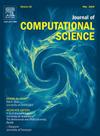动态增长和收缩神经网络的数据分类
IF 3.7
3区 计算机科学
Q2 COMPUTER SCIENCE, INTERDISCIPLINARY APPLICATIONS
引用次数: 0
摘要
数据驱动的神经网络模型构建问题是人工智能领域的核心问题之一。标准方法假定具有可训练权重的固定体系结构。一个概念上更高级的假设是,我们不仅要训练权值,还要找出最优的模型架构。我们提出了一种实现这一目标的新方法。本文是我们题为“神经网络与蒙特卡罗树搜索的动态增长和收缩”的会议论文的扩展版本(Świderski和Jastrzebska, 2024)。在本文中,我们详细展示了如何用一个过程创建一个神经网络,该过程允许模型在训练时动态收缩和增长。体系结构设计的决策机制由蒙特卡罗树搜索过程控制,该过程模拟网络行为,并允许比较几种候选体系结构变化以选择最佳方案。采用视觉和时间序列数据集对该方法进行了验证,证明了该方法在多变量时间序列分类中的特殊有效性。这归因于体系结构动态适应的能力,允许对每个时间序列进行独立修改。为了提高方法的可重复性,我们发布了该方法的开源代码。它是用Python编写的。在视觉模式和多变量时间序列分类任务中的实验评价表明,该方法具有良好的鲁棒性和适应性。本文章由计算机程序翻译,如有差异,请以英文原文为准。
Data classification with dynamically growing and shrinking neural networks
The issue of data-driven neural network model construction is one of the core problems in the domain of Artificial Intelligence. A standard approach assumes a fixed architecture with trainable weights. A conceptually more advanced assumption is that we not only train the weights but also find out the optimal model architecture. We present a new method that realizes just that. This article is an extended version of our conference paper titled “Dynamic Growing and Shrinking of Neural Networks with Monte Carlo Tree Search (Świderski and Jastrzebska, 2024). In the paper, we show in detail how to create a neural network with a procedure that allows dynamic shrinking and growing of the model while it is being trained. The decision-making mechanism for the architectural design is governed by the Monte Carlo tree search procedure, which simulates network behavior and allows comparing several candidate architecture changes to choose the best one. The proposed method was validated using both visual and time series datasets, demonstrating its particular effectiveness in multivariate time series classification. This is attributed to the architecture’s ability to adapt dynamically, allowing independent modifications for each time series. To enhance the reproducibility of our method, we publish open-source code of the proposed method. It was prepared in Python. Experimental evaluations in visual pattern and multivariate time series classification tasks revealed highly promising performance, underscoring the method’s robustness and adaptability.
求助全文
通过发布文献求助,成功后即可免费获取论文全文。
去求助
来源期刊

Journal of Computational Science
COMPUTER SCIENCE, INTERDISCIPLINARY APPLICATIONS-COMPUTER SCIENCE, THEORY & METHODS
CiteScore
5.50
自引率
3.00%
发文量
227
审稿时长
41 days
期刊介绍:
Computational Science is a rapidly growing multi- and interdisciplinary field that uses advanced computing and data analysis to understand and solve complex problems. It has reached a level of predictive capability that now firmly complements the traditional pillars of experimentation and theory.
The recent advances in experimental techniques such as detectors, on-line sensor networks and high-resolution imaging techniques, have opened up new windows into physical and biological processes at many levels of detail. The resulting data explosion allows for detailed data driven modeling and simulation.
This new discipline in science combines computational thinking, modern computational methods, devices and collateral technologies to address problems far beyond the scope of traditional numerical methods.
Computational science typically unifies three distinct elements:
• Modeling, Algorithms and Simulations (e.g. numerical and non-numerical, discrete and continuous);
• Software developed to solve science (e.g., biological, physical, and social), engineering, medicine, and humanities problems;
• Computer and information science that develops and optimizes the advanced system hardware, software, networking, and data management components (e.g. problem solving environments).
 求助内容:
求助内容: 应助结果提醒方式:
应助结果提醒方式:


